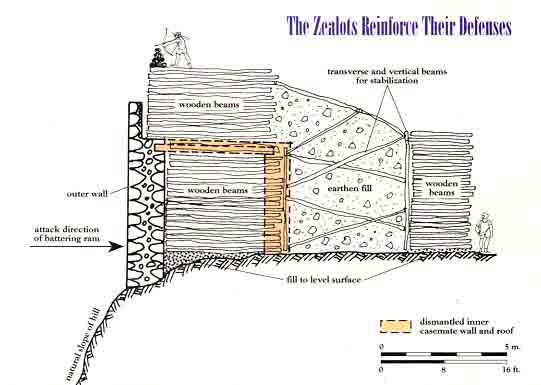Image Details

F. Schonbach
Attack and defense. Archaeological evidence and the detailed description of the first-century historian Josephus Flavius allow us to reconstruct the Zealots’ response to the Roman threat. The Zealots probably dismantled the inner casemate wall and built a wood-and-earth wall directly behind the outer wall at the point of attack. This pliant wall would have had the effect of absorbing and dispersing the force of the battering ram’s blows. To build it, the Zealots scavenged from the roofs of their buildings about 4,000 long wooden beams (13 to 16 feet long) and hundreds of shorter beams (7 to 8 feet long). They stacked the long beams in the outermost section of the new wall, piled a section of earth with stabilizing beams behind it and stacked the shorter beams in the innermost section. Ropes and nails probably held the wooden stacks together. Calculations based on the available wood reveal that the wood-and-earth wall could have been 70 to 80 feet long, about 60 feet wide and 24 to 27 feet high.
Circumventing the Zealots’ tactic, however, the Romans rained fire upon the new wall, setting its wood ablaze and leading to the downfall of the fortress.
